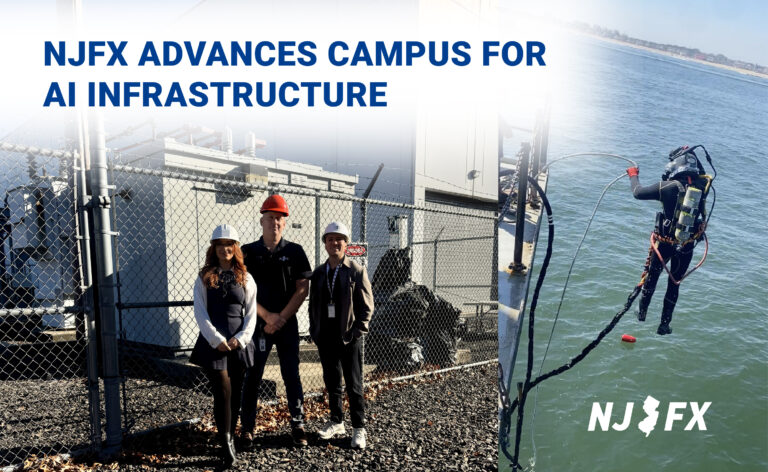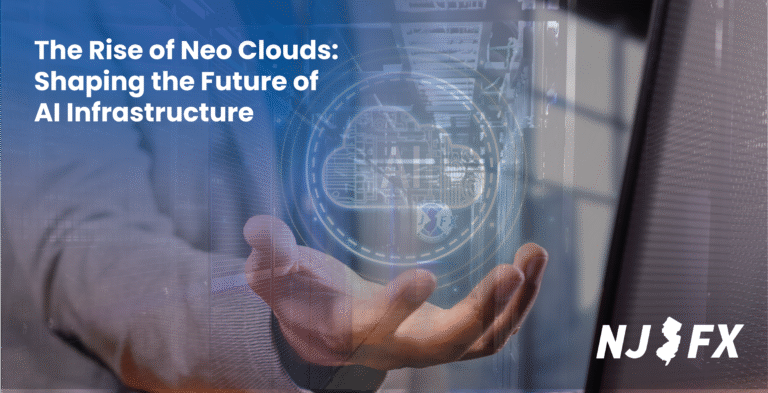AI Advancements are reshaping Global Networks
Carrier-neutral hubs and Tier 3 facilities—particularly in strategic markets like New Jersey—offer the scalability and redundancy organizations need to stay ahead of disruption. As enterprises embrace AI-powered analytics and security, they’re rethinking global connectivity strategies to prioritize agility, reliability, and cost efficiency.

AI advancements are playing a pivotal role in transforming global network strategies and redefining connectivity priorities. As enterprises strive to adapt to the digital age, the influence of AI is compelling a comprehensive thought process of how networks are structured and managed. This shift has been particularly significant in strategic locations like New Jersey, where the demand for Tier 3 carrier neutral infrastructure is on the rise. With AI driving unprecedented efficiency and intelligence in data processing, operators are increasingly prioritizing robust, scalable solutions to mitigate risks to their networks. The integration of AI into network infrastructure is revolutionizing how organizations approach their global connectivity strategies. This section explores the profound impact of AI advancements on network architecture and the subsequent rethinking of traditional network strategies.
AI Advancements and Connectivity
AI advancements are fundamentally altering the landscape of network connectivity. These innovations are enabling more intelligent, efficient, and adaptive network systems that can respond to changing demands in real-time. Machine learning algorithms are now capable of predicting network traffic patterns, allowing for proactive resource allocation and optimization. This predictive capability significantly enhances network performance and reliability. Edge computing, powered by AI, is reducing latency and improving data processing speeds. By bringing computational power closer to the data source, organizations can achieve near-instantaneous responses, critical for applications like autonomous vehicles and IoT devices.
AI-driven network security measures are becoming increasingly sophisticated, offering robust protection against evolving cyber threats. These systems can detect anomalies and potential breaches faster than ever before, ensuring the integrity of global networks.
Carrier Neutral Infrastructure Benefits
The advent of AI technologies is compelling organizations to reassess their global network strategies. This shift is driven by the need for more flexible, scalable, and intelligent network infrastructures.
Traditional network architectures are being replaced by software-defined networking (SDN) and network function virtualization (NFV). These technologies, enhanced by AI, allow for more dynamic and efficient network management. Cloud-native networking is gaining prominence, enabling organizations to leverage the power of distributed computing. This approach facilitates better resource utilization and provides the agility needed to adapt to rapidly changing business requirements. AI-powered analytics are now central to network strategy, offering deep insights into network performance, user behavior, and potential optimizations. These insights drive data-informed decision-making, leading to more effective network designs and implementations.
As AI continues to shape the technological landscape, organizations are reevaluating their connectivity priorities. The growing importance of carrier-neutral infrastructure and the strategic significance of data centers in locations like New Jersey. Carrier-neutral infrastructure has become a cornerstone of modern network strategies, offering numerous advantages in the AI-driven landscape. Flexibility is a key benefit of carrier-neutral facilities. Organizations can choose from multiple service providers, allowing them to optimize their network based on specific needs and budget constraints. Redundancy and reliability are significantly enhanced in carrier-neutral environments. The presence of multiple carriers ensures that if one experiences issues, others can seamlessly take over, minimizing downtime and maintaining connectivity.
Carrier-neutral infrastructure also promotes competition among providers, often resulting in more competitive pricing and improved service quality. This market-driven approach benefits organizations by providing access to cutting-edge technologies and services.
Data Centers in New Jersey: A Strategic Choice
New Jersey has emerged as a strategic location for data centers, offering unique advantages for organizations looking to optimize their network infrastructure in the AI era. Proximity to major financial centers like New York City makes New Jersey an ideal location for data centers serving the finance industry. This proximity reduces latency, crucial for high-frequency trading and real-time financial operations. New Jersey’s robust power infrastructure and favorable climate contribute to the reliability and efficiency of data centers in the region. These factors are essential for maintaining the high-performance computing environments required for AI applications.
The state’s strong telecommunications backbone and access to multiple carrier networks enhance connectivity options. This infrastructure supports the high bandwidth and low latency requirements of AI-driven applications and services.
Latest News & Updates
Stay informed with the latest press releases, industry news, and more.







